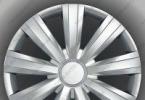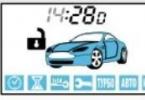Cars from Japanese manufacturers have long been known for their reliability and unpretentiousness. Toyota Corolla can surely be called one of the most popular cars. The history of the model lasts more than half a century, today eleven generations of Toyota Corolla are known. Impeccable technological qualities of the car, as well as great value prices and quality bribe tens of thousands of motorists every year.
Today, statistics show that over the entire period of production, about 50 million copies of the car were sold. The question arises: is this car really good, and what real resource Toyota Corolla engine
Line of power units
Japanese engines loudly declared themselves back in the 90s of the last century. Engineers Toyota managed at that time to create a truly outstanding design, which was distinguished by its small dimensions and big power. Among other things, Toyota Corolla power units are known for their low fuel consumption and high-torque power. The base is considered a 1.4-liter 4ZZ-FE engine with a chain drive. It has a lot in common with the 1.6-liter 3ZZ-FE engine. The manufacturer decided to install a smaller crankshaft and change the piston stroke, thus, it turned out to be structurally similar, but less powerful engine with a volume of 1.4 liters.

The 1.6 1ZR FE power unit is considered the most popular and in demand. Structurally, it consists of four cylinders and sixteen valves. This setting predetermines the presence chain drive, which has a positive effect on the engine resource. It was mainly installed under the hood of the Toyota Corolla E150, E160. Technologically, it turned out to be a perfect power unit, which was designed taking into account previous experience, but already more modern technologies. The gas distribution system of the engine is equipped with VVT system I, which contributes to the highest quality power supply to the motor.
How many engines run on Toyota Corolla
The first 250 thousand kilometers, as a rule, both engines pass without any significant problems. The main thing is to change the engine oil on time. The manufacturer recommends changing the lubricant every 10 thousand kilometers. But, as practice shows, to save performance characteristics vehicle and engine life extension scheduled replacement best of all every 7.5-8 thousand km.
Common malfunctions of 1ZZ, 3ZZ, 4ZZ-FE motors:
- Increased oil consumption. It is observed mainly among power plants manufactured before 2002. The problem lies in the oil scraper rings, which are best replaced with a 2005 model or newer ones. Oil is added to the level, after which the problem disappears;
- Increased noise, engine knock 1ZZ. Occurs at the turn of the first 150 thousand km, and is solved by replacing the timing chain. Valves on Toyota Corolla engines knock on rare cases, and in frequent adjustment dont need;
- RPM instability is solved by flushing throttle valve and idle valve
- On some engines, vibration often occurs, it is not always possible to eliminate it. Need to check back cushion engine.
When compared in terms of resources power plants different generations, then, of course, the engines of the 3ZZ, 4ZZ series significantly outperform the older 1ZZ modification. They lend themselves to boring and sleeve, which is a definite plus. But 1ZZ motors are often denied service, they are practically not amenable to major repairs, or carrying out such work turns out to be an unprofitable exercise. It is for this reason that many domestic motorists do not like 1ZZ power plants.
Owner reviews
In Russia, you can often find Toyota Corolla with the VVT 1 system. This modification was assembled taking into account the climatic and other features of the region. It also has four cylinders, equipped injection system nutrition. An indisputable advantage is perfectly adjusted valve timing. Thanks to this, the engine turned out to be quite economical, without losing its factory dynamic characteristics. Japanese engineers claim that their engines run at least 250,000 kilometers without problems, is this really true? Owner reviews.
Engine 1.4

- Maxim, Moscow. Traveled for a long time Toyota steering wheel Corolla e150 2008 1.4L engine paired with mechanical box. I can say with confidence that in most cases of mechanical action, the engines of this series require 200-250 thousand kilometers during the passage. A lot depends on the conditions in which the car was used. Wear out first oil scraper rings and caps, also the timing chain needs to be replaced after 120-150 thousand km, as lucky. This is not a major overhaul, but, in fact, a bulkhead of the engine. Since the sealing of the cylinders remains at this point for another good level.
- Igor, Krasnodar. Been driving a Toyota Corolla since 2011. The mileage is already 220 thousand kilometers, the engine is still peppy, the car goes well along the highway, I change the oil after 5-6 thousand km, I pour only synthetics recommended by the manufacturer. I adhere to a calm driving style, I don’t drive around the city, with such an attitude towards the car, I think that it will pass at least 350-400 thousand km, and then we’ll see what to do.
- Vyacheslav, Tambov. I have a restyled Toyota version Corolla e150 with 1.4L 4ZZ-FE engine. During the operation I realized one thing that timely replacement oil plays important role. Subject to timely service the engine will run for a long time. I always fill synthetics and practically do not deviate from the manufacturer's recommendations. Mileage is 280,000 km, which is definitely good indicator. During this time, I changed the timing chain twice, fuel consumption is adequate, in rare cases it exceeds the official norm. In general, I am satisfied with the car, the dynamics are also at a good level after such an amount of time.
- Vasily, Rostov. The only downside Toyota engine - the inability to conduct overhaul. I traveled 300,000 kilometers on my Toyota Corolla e160 with a 1.4 engine, after which I decided to sell it. The engine was in perfect condition, but decided to change the car because I wanted a new one. I heard that there are still craftsmen and worn-out engines are handicrafted, so there should be no problems here. It is necessary to monitor the condition of the power unit and respond in time to any malfunctions. Then 300-350 thousand Toyota Corolla will definitely pass.
Many car owners often think about , what kind of oil is better to pour into the Corolla. The options can be varied, because in addition to the original lubricants, there are a good choice analogues of various quality and cost. Before buying, you need to understand the intricacies of choice.
What lubricant is suitable?
In the car's service book, you can find information about which oil is suitable for the E150 engine or another model that you own. If you do not have a service book, pick up suitable lubricant You can use the table that many sellers of motor oils can offer.
Thanks to the catalog, you can find out exactly whether your car needs synthetics or mineral liquid what viscosity suits him, and how much oil you need to fill in your Toyota.
Genuine products are usually recommended by the factory as they are optimally suited to the engine, but such products are quite expensive, and if you buy them in an unverified place, there is a high risk of acquiring a fake. It is not necessary to buy only original oil especially if you have an older car. It is enough to choose a lubricant similar in viscosity and other parameters from any manufacturer that you trust, and whose product price suits you.
For example, for a 2008 Toyota E 150, the service book recommends filling in synthetic products, the viscosity of which may vary. Most drivers fill up universal fluid 10W-30, except for her suitable motor oil having a viscosity of 5W-30, -20, as well as a rather rare 0W-20.
Petrol engine 1.6, according to API specifications, requires engine oil SL, SM. Products with this marking are also suitable for cars manufactured in 2001, 2003, 2006, 2010. However, it is worth paying attention to the fact that such marking is inherent only in older generations of lubricants. For vehicles manufactured in 2012, 2013, 2014, 2015, fluids of the same viscosity, but marked SN, are applicable. This is a newer label.
If your car was manufactured from 2002 to 2011, and old-type lubricants are not for sale in your region, you can safely purchase products with the SN marking. For example, the manufacturer recommends 5W-30 SN oil for the year of manufacture. For gasoline engines The bottle must be labeled PI.
There are Sprinter fluids, they are designed for small vans, sports cars, fit for 2013 Toyota Corolla. The difference between such oils and conventional oils lies in the improved formula, thanks to which the engine, which is experiencing increased loads, cools better, protects against rust and other unpleasant phenomena associated with the operation of the car. This oil is recommended for Toyota Corolla turbocharged.
If the engine was produced before 2013, the choice of oil should be focused on high anti-corrosion and anti-wear properties, since older power units have thinner walls and need special protection. Suitable products labeled SL, which has an improved formula. You can infuse energy-saving products, they are well suited for generation 110.
Possible problems with high consumption of lubricants
The engine oil level must be checked regularly. Ideally, the mark should be kept in the middle. Consumption tolerances should not exceed liters per 10 thousand km for a used car. If the car eats grease, you need to pay attention to the condition of its power unit, most likely it needs to be repaired.
For example, if the oil pressure sensor is constantly on, it doesn’t matter if you have generation 110 or another model, it will not be superfluous to check not only the level, but also the sensor itself. If you find that the car is eating oil, for example, about a liter began to leave for 1 thousand km, it's time to repair the engine. Most often, Toyota eats if the rings are worn out and valve stem seals: By replacing them, you can get rid of the problem.
It happens that the oil pressure is normal, the rings are new, but the car still eats lubricating fluid in large quantities. In this case, you need to check the oil pump, especially if you have previously used low-quality motor product. In this case, not only the replacement of the defective part will be required, but also complete replacement oils for better quality.

It is worth paying attention to the fact that a serviceable car can eat oil if it Low quality and its viscosity is insufficient: such a substance is simply squeezed out through various slots, for example, it can flow from under the filling cap.
That is why, when deciding which oil to pour, you should not save at all by purchasing cheap products of dubious quality. Repair and replacement of the fluid with a suitable one will cost much more.
How to change the lubricant yourself?
Having decided which oil to fill in, you have to think about whether to change it at a car service or do it yourself. Many sellers charge extra for liquids, but offer free replacements. If you do not want to waste time or do not have suitable conditions for self replacement, then you can use the services of a car service, where they can tell you how much oil you need. If the products are offered for bottling, you will not have to overpay for extra liters. It is worth paying attention to the fact that along with changing the lubricant, the oil filter is also changed. It should be bought immediately.
If you want to change fluids yourself, you can do it in a garage. To do this, you need a pit or overpass. Before replacing the car, you need to warm it up, for this it is enough to drive a few blocks. After that, install Toyota over the pit. Make sure that the car is not tilted. It is better to work with gloves, as the drained liquid will be hot. Prepare in advance a container of a suitable volume into which you will drain the waste liquid, unscrew drain plug: it is located on the crankcase. Wait a few minutes for all the grease to drain, then change the oil filter.
Story model range Corolla originates from 1966, when compact novelty from Toyota for the first time left the assembly line. After 8 years, she became the Guinness book record holder as the best-selling car on the planet. Today Corolla is already presented in the 11th generation and the concern is not going to stop there. corolla has a wide range engines with a variety of technical specifications: from barely running to amazing 240-horsepower copies of the 4A-GE TRD line with a volume of 1.6 liters. In this article, you will be able to get acquainted with information about what kind of oil to pour into them and how much.
Truly conquer domestic market the model began in the 90s with the release of the seventh generation (1991). Then only carburetor 1.3-liter modifications of the previous generation were imported into Russia. The Corolla E110 debuted in 1995 and outwardly it completely repeated the E100. The engines did not change the volume - these are the same engines in the range of 1.3-2.2 liters, producing 70-165 hp. The ninth generation since 2000 was already based on the Toyota Vista platform and differed from its predecessor in a modified front end of the car. In terms of engines, the top was now occupied by a 192-horsepower 1.8-liter unit.
The Corolla E140 is the next generation of the super popular golf class car, which hit the assembly line in 2006. Russian drivers were able to choose between 1.4- and 1.6-liter gasoline engines for 97 and 124 hp, with more powerful equipment was paired with a robotic transmission. The restyling of the 10th generation has expanded the range of installations with a 1.3-liter version with 101 hp. (also present on the market diesel modifications for 1.4, 2.0 and 2.2 liters). And since 2012 year Toyota releases Corolla in the E170 generation, the 11th from the start of production of the model. The elegant car has become even more practical and reliable, while retaining the legendary economy and a variety of trim levels.
Generation E100 (1991 - 1998)
Engine Toyota 5A-F/FE/FHE 1.5 l. 105 HP
- , 15W-40, 20W-50
Engine Toyota 4A-C/L/LC/ELU/F/FE/FHE/GE/GZE 1.6 l. 100, 105, 115 HP
- What engine oil is poured from the factory (original): Synthetic 5W30
- Oil consumption per 1000 km: up to 1000 ml.
- When to change oil: 5000-10000
Engine Toyota 7A-FE 1.8 l. 105, 115, 118 HP
- What engine oil is poured from the factory (original): Synthetic 5W30
- Oil types (by viscosity): 5W-30, 10W-30, 15W-40, 20W-50
- Oil consumption per 1000 km: up to 1000 ml.
- When to change oil: 5000-10000
Generation E110 (1995 - 2002)
Engine Toyota 5A-F/FE/FHE 1.5 l. 100 HP
- What engine oil is poured from the factory (original): Synthetic 5W30
- Oil types (by viscosity): 5W-30, 10W-30, 15W-40, 20W-50
- How many liters of oil in the engine (total volume): 3.0 liters.
- Oil consumption per 1000 km: up to 1000 ml.
- When to change oil: 5000-10000
Engine Toyota 4A-C/L/LC/ELU/F/FE/FHE/GE/GZE 1.6 l. 110, 115 HP
- What engine oil is poured from the factory (original): Synthetic 5W30
- Oil types (by viscosity): 5W-30, 10W-30, 15W-40, 20W-50
- How many liters of engine oil (total): 3.0 (4A-FE, 4A-GE), 3.2 (4A-L/LC/F), 3.3 (4A-FE), 3.7 (4A-GE/GEL)
- Oil consumption per 1000 km: up to 1000 ml.
- When to change oil: 5000-10000
Engine Toyota 7A-FE 1.8 l. 110 HP
- What engine oil is poured from the factory (original): Synthetic 5W30
- Oil types (by viscosity): 5W-30, 10W-30, 15W-40, 20W-50
- How many liters of oil in the engine (total volume): 3.7 liters.
- Oil consumption per 1000 km: up to 1000 ml.
- When to change oil: 5000-10000
Engine Toyota 1ZZ-FE/FED/FBE 1.8 l. 120, 125 HP
- What engine oil is poured from the factory (original): Synthetic 5W30
- Oil types (by viscosity): 5W-30, 10W-30
- How many liters of oil in the engine (total volume): 3.7 liters.
- Oil consumption per 1000 km: up to 1000 ml.
- When to change oil: 5000-10000
Generation E120 (2000 - 2006)
- What engine oil is poured from the factory (original): Synthetic 5W30
- Oil types (by viscosity): 5W-30, 10W-30
- How many liters of oil in the engine (total volume): 3.7 liters.
- Oil consumption per 1000 km: up to 1000 ml.
- When to change oil: 5000-10000
Engine Toyota 1NZ-FE/FXE 1.5 l. 105, 110 HP
- What engine oil is poured from the factory (original): Synthetic 5W30
- Oil types (by viscosity): 5W-30, 10W-30
- How many liters of oil in the engine (total volume): 3.7 liters.
- Oil consumption per 1000 km: up to 1000 ml.
- When to change oil: 5000-10000
Engine Toyota 3ZZ-FE 1.6 l. 110 HP
- What engine oil is poured from the factory (original): Synthetic 5W30
- Oil types (by viscosity): 5W-30, 10W-30
- How many liters of oil in the engine (total volume): 3.7 liters.
- Oil consumption per 1000 km: up to 1000 ml.
- When to change oil: 5000-10000
Engine Toyota 1ZZ-FE/FED/FBE 1.8 l. 125, 130, 132, 136 HP
- What engine oil is poured from the factory (original): Synthetic 5W30
- Oil types (by viscosity): 5W-30, 10W-30
- How many liters of oil in the engine (total volume): 3.7 liters.
- Oil consumption per 1000 km: up to 1000 ml.
- When to change oil: 5000-10000
Generation E140 (2006 - 2013)
Engine Toyota 2NZ-FE 1.3 l. 85 HP
- What engine oil is poured from the factory (original): Synthetic 5W30
- Oil types (by viscosity): 5W-30, 10W-30
- How many liters of oil in the engine (total volume): 3.7 liters.
- Oil consumption per 1000 km: up to 1000 ml.
- When to change oil: 5000-10000
Engine Toyota 4ZZ-FE 1.4 l. 97 HP
- What engine oil is poured from the factory (original): Synthetic 5W30
- Oil types (by viscosity): 5W-30, 10W-30
- How many liters of oil in the engine (total volume): 3.7 liters.
- Oil consumption per 1000 km: up to 1000 ml.
- When to change oil: 5000-10000
Engine Toyota 1NZ-FE/FXE 1.5 l. 110 HP
- What engine oil is poured from the factory (original): Synthetic 5W30
- Oil types (by viscosity): 5W-30, 10W-30
- How many liters of oil in the engine (total volume): 3.7 liters.
- Oil consumption per 1000 km: up to 1000 ml.
- When to change oil: 5000-10000
Engine Toyota 1ZR-FE/FAE 1.6 l. 124 HP
- Oil consumption per 1000 km: up to 1000 ml.
- When to change oil: 5000-10000
Engine Toyota 2ZR-FE/FAE/FXE 1.8 l. 136 HP
- What engine oil is poured from the factory (original): Synthetic 5W20
- Oil types (by viscosity): 0W-20, 5W-20, 5W-30, 10W-30
- Oil consumption per 1000 km: up to 1000 ml.
- When to change oil: 5000-10000
Engine Toyota 1ZZ-FE/FED/FBE 1.8 l. 140 HP
- What engine oil is poured from the factory (original): Synthetic 5W30
- Oil types (by viscosity): 5W-30, 10W-30
- How many liters of oil in the engine (total volume): 3.7 liters.
- Oil consumption per 1000 km: up to 1000 ml.
- When to change oil: 5000-10000
Engine Toyota 3ZR-FE/FAE/FBE 2.0 l. 145 HP
- What engine oil is poured from the factory (original): Synthetic 5W20
- Oil types (by viscosity): 0W-20, 5W-20, 5W-30, 10W-30
- How many liters of oil in the engine (total volume): 4.2 liters.
- Oil consumption per 1000 km: up to 1000 ml.
- When to change oil: 5000-10000
Generation E170 (2012 - present)
Engine Toyota 1ZR-FE/FAE 1.6 l. 122 HP
- What engine oil is poured from the factory (original): Synthetic 5W30
- Oil types (by viscosity): 0W-20, 5W-20, 5W-30, 10W-30
- How many liters of oil in the engine (total volume): 4.7 liters.
- Oil consumption per 1000 km: up to 1000 ml.
- When to change oil: 5000-10000
Engine Toyota 2ZR-FE/FAE/FXE 1.8 l. 132, 140 HP
- What engine oil is poured from the factory (original): Synthetic 5W20
- Oil types (by viscosity): 0W-20, 5W-20, 5W-30, 10W-30
- How many liters of oil in the engine (total volume): 4.2 liters.
- Oil consumption per 1000 km: up to 1000 ml.
- When to change oil: 5000-10000
The oil filter and oil are changed every 10,000 km, the replacement date may vary slightly depending on the specific operating conditions. This article provides an example of an oil change for Toyota Corolla cars since 2010. From 2006 - 2010, all operations are similar, except that the design uses a classic oil filter in a metal case instead of a filter insert.
To remove and install the oil filter on Toyota car Corolla you will need the following tool: socket 14mm, wrench for oil insert cap code 09228-06501 or chain or soft puller with strap tape oil filter, funnel, screwdriver.
Using a screwdriver, remove the rubber plugs from their seats in the engine protection
Unscrew the oil filler plug in the engine compartment
I unscrew the plug from the crankcase with a 14 mm wrench to drain the oil
We drain the oil into a volume of at least 4.2 liters., This is exactly the volume of oil in the crankcase Toyota engine Corolla 2006-2012 year 1.6 liter engine 1 ZR-FE

Unscrew the cap with a special key 09228-06501. The cap can also be unscrewed with a strap wrench or a chain wrench. When unscrewing with a chain wrench, it is necessary to wrap the chain in a strip of rag so as not to damage or leave marks on the plastic cap. Filmed just like that.
We take out the cap with the filter element.
Removing the filter element
Instead of the installed original Toyota filter element code 04152-37010, an analogue of Knecht (Mahle Filter) OX 416 D1 was installed
Place of landing of the filter insert. It is worth noting that the metal cartridge springs, ensuring that the replacement cartridge is pressed against the sealing surfaces.
View of the cap of the filter insert. Inscriptions: twist clockwise, unscrew counterclockwise. tightening torque 25 N * m, that is, 2.55 kg per meter.
Six threads, i.e. six turns until fully tightened. The cap has a rubber sealing ring(section circle). If the ring is good condition without scoring, gouges, then there is not much point in changing it. A new ring is included with the new filter. Replace if necessary, lubricate with oil.
Install a new filter element.
We pour oil. Oil is absorbed into the porous surface, so after absorbing it, add more oil. This is necessary so that in the first seconds of starting the engine, the oil immediately begins to flow to the valves through the cardboard, and does not linger in the chamber of the replaceable insert.
We install the cap with the filter insert in place.
Pay attention to the location of the cap. He must trust himself to his position before the withdrawal. There are risks on the cap between which there should be a pointer - it can be seen in the photo opposite the number 10 on the tape measure.
Pour oil through the oil filler neck. We close the cork.
The oil must be between the level marks. After the first drive, check the engine oil level, top up if necessary.
I also wanted to separately highlight the option of an express oil change in a car engine, more detailed information, about the technology of operations and the features of such a replacement, you can find in the article "


















